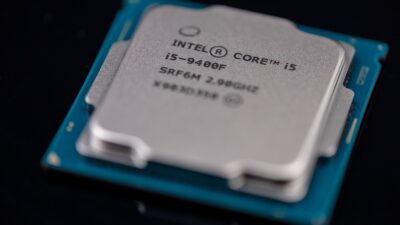Virtual Reality (VR) has rapidly evolved from a concept rooted in science fiction to a transformative technology that reshapes how we experience digital environments. As VR applications span gaming, education, healthcare, and beyond, the demand for high-performance graphics processing power has reached unprecedented levels. This surge in VR adoption is significantly impacting GPU (Graphics Processing Unit) development, driving innovations and setting new industry standards.
The Evolution of VR and Its Demands on Hardware
VR technology immerses users in a virtual world, requiring rapid rendering of complex graphics to create a seamless experience. Unlike traditional gaming, which can afford some latency, VR demands near-instantaneous responses to user inputs to prevent discomfort, which can lead to motion sickness. As a result, GPU developers are focusing on several key areas to enhance performance:
1. Increased Frame Rates
Smoothness is essential in VR. A minimum of 90 frames per second (FPS) is often recommended for comfortable experiences. This necessitates GPUs capable of handling high frame rates while rendering high-resolution graphics, leading to a push for more advanced architectures and efficient cooling solutions. Continuous advancements in GPU technology, such as Nvidia’s Ampere and AMD’s RDNA architectures, focus on improving performance per watt, maximizing power efficiency while delivering high frame rates.
2. Higher Resolutions
High-definition displays with resolutions of 4K or higher are becoming common in VR headsets. This escalation demands GPUs that can manage not just higher pixel counts but also complex visual effects like anti-aliasing, dynamic lighting, and realistic textures. Manufacturers are innovating with multi-chip solutions and enhanced memory bandwidth to better handle this throughput.
3. Real-Time Ray Tracing
Ray tracing technology has transformed how graphics are rendered, producing stunningly realistic lighting and shadow effects. For VR, the ability to achieve real-time ray tracing is a game-changer. This has led GPU developers to integrate dedicated hardware (like Nvidia’s RT cores) specifically optimized for ray tracing, ensuring that immersive environments can maintain high quality without compromising performance.
Addressing Latency and Input Response
A key challenge in VR is latency—the delay between user input and visual feedback. High latency can cause disorientation and detract from the immersive experience. GPU developers are working to minimize this latency through advancements in hardware synchronization and software optimizations. Techniques like foveated rendering aim to reduce resource usage by lowering the resolution in peripheral vision areas while keeping focal areas crisp and clear.
The Role of AI and Machine Learning
Integrating AI and machine learning into GPU development has also shown potential in enhancing VR experiences. These technologies can optimize rendering by predicting user actions, adjusting graphical fidelity based on user focus, or even generating content on the fly. The incorporation of dedicated Tensor cores in NVIDIA GPUs showcases this trend, allowing real-time AI enhancements that can improve visual fidelity without demanding a linear increase in processing power.
Collaborative Efforts in VR Optimization
The development of VR-ready GPUs isn’t solely the responsibility of manufacturers. Game developers, software engineers, and hardware designers are collaborating to create ecosystems that optimize performance. APIs like Vulkan and DirectX 12 deliver low-level access to GPU resources, facilitating better control over hardware and enabling developers to produce more efficient applications that maximize the capabilities of emerging GPUs.
The Future of GPU Development in VR
As VR technology continues to mature, we can expect further innovations in GPU design and performance. The industry is likely to witness:
-
Multi-Modal Experiences: The merging of VR with augmented reality (AR) and mixed reality (MR) will necessitate even more powerful GPUs that can handle diverse inputs and outputs.
-
Cross-Platform Integration: As VR becomes more mainstream, GPUs will need to support a variety of platforms and devices, from dedicated VR headsets to mobile and cloud-based systems.
- Sustainability Initiatives: With growing awareness around energy consumption and environmental impact, GPU manufacturers may focus on developing energy-efficient products that still deliver high performance.
Conclusion
The impact of VR on GPU development is profound, steering the industry towards unprecedented innovations. As we prepare for a future filled with immersive experiences, both consumers and creators will benefit from the advancements in GPU technology that VR has catalyzed. The ongoing race to meet the demands of realism, responsiveness, and engagement will continue to push the boundaries of what is possible in digital environments, ensuring that VR technology remains at the forefront of technological evolution.


